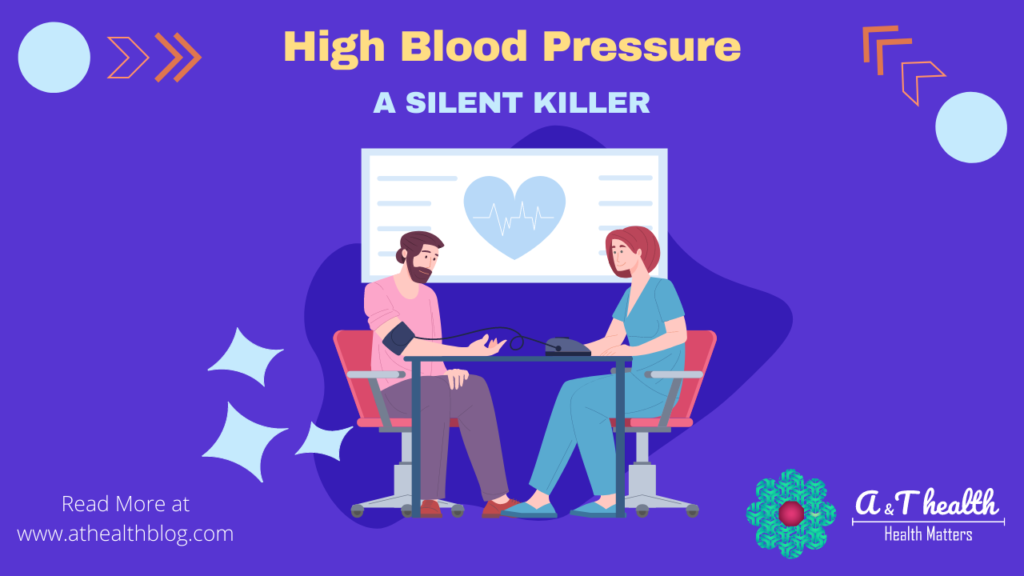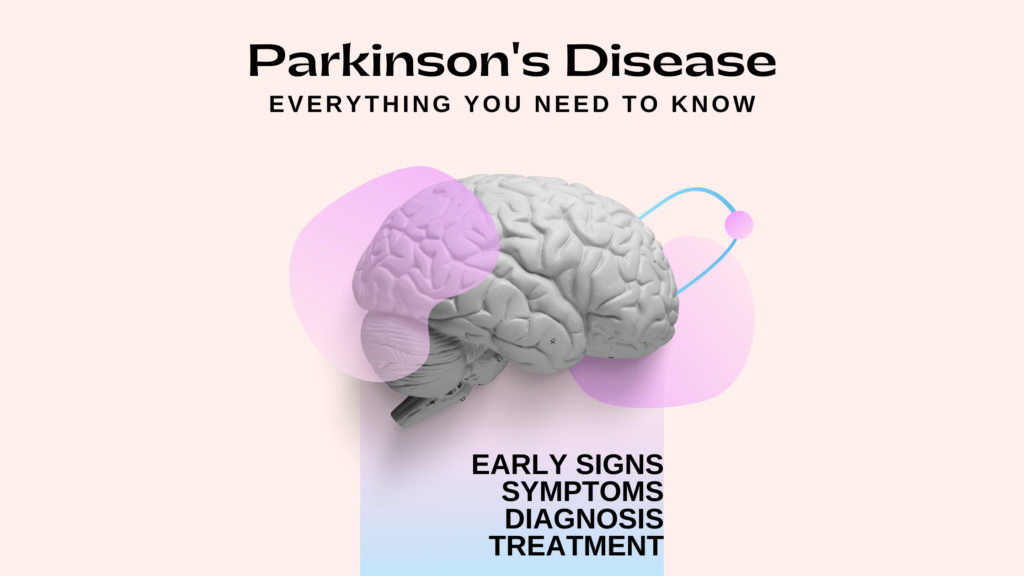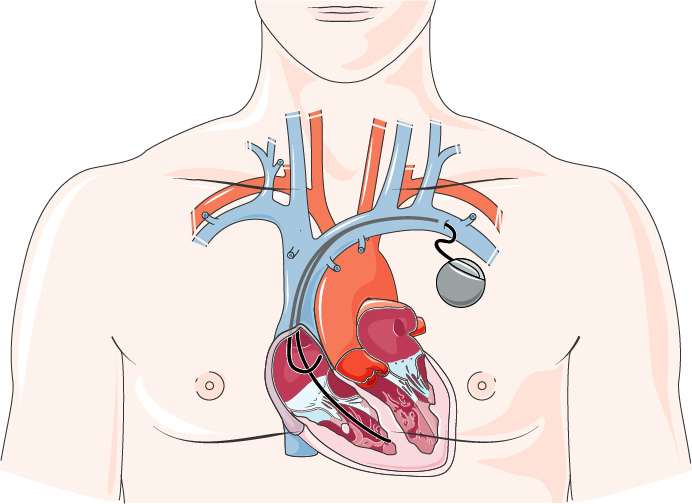“Worrying about things can be fun” (of course, this is not true). But when the wrong things get stuck in our minds, we can develop anxiety.
Anxiety disorders are among the most common mental health conditions in the United States. Although there are different types, we generally associate anxiety with feelings of worry and stress.
Anxiety disorders are classified in the Diagnostic and Statistical Manual of Mental Disorders, Fifth Edition. Following are the types of anxiety disorders
- Generalized Anxiety Disorder – GAD
- Panic Disorder
- Post-traumatic Stress Disorder – PTSD
- Agoraphobia
- Social Anxiety Disorder – SAD
- Specific Phobias
In this post, you will learn about a few of the more common types of anxiety disorders:
Generalized Anxiety Disorder – GAD
Generalized anxiety disorder, or GAD, is when your everyday worries are so frequent, disruptive, and out of control that they interfere with your life.
Generalized anxiety disorder (GAD) can be challenging to deal with. It can cause great anxiety and excessive worry about several events and activities in daily life that would otherwise be only mildly upsetting.
Generalized anxiety disorder, or GAD, is characterized by excessive worry and tension that occurs more days than not for a minimum of 6 months.
A wide variety of symptoms are associated with GAD, including muscle tension, stomach problems, repetitive worries, inability to concentrate, irritability, feeling jittery and restless – to name a few.
Symptoms of Generalized Anxiety:
Each person with GAD is likely to experience a unique pattern of symptoms. However, common ones include difficulty handling stressful situations, inability to relax or fall asleep when feeling anxious or stressed, and being sensitive to criticism from others.
Psychological Symptoms:
- Excessive anxiety
- Worries that are difficult to control
- Feeling keyed up or on edge
- Trouble concentrating or mind going blank
Physical Symptoms:
- Restlessness
- Fatigue
- Muscle tension
- Sleep disturbance
- Irritability

Panic Disorder:
Panic disorder is a recognized mental illness that can severely impair the lives of sufferers and their loved ones.
People with panic disorder experience sudden, intense fear and anxiety attacks that can last for several minutes and feel as though they’re doomed to die.
Once the episodes start, they typically peak within 10 minutes and subside within half an hour, followed by a sense of calm. Fear of future panic attacks, concern about consequences, and general anxiety often persist for months or years.
Panic attacks appear out of nowhere and cause intense physical symptoms. Sufferers often find themselves shying away from everyday activities, such as going to work or school and sometimes feel unsafe even in their own homes.
Panic disorder can be a debilitating condition, preventing people from being able to enjoy their lives and causing them to withdraw from others.
Symptoms Of Panic Disorder:
A panic attack usually comes on without warning or reason. This can be very scary and shocking, but remember, these episodes are generally not dangerous and will usually last no longer than an hour.
Although each individual will experience the panic attack differently, some of the most common symptoms of a panic attack include:
Psychological Symptoms:
- Depersonalization (being detached from oneself)
- Derealization (feelings of being detached from one’s environment)
- Fear of losing control, going crazy, or dying
Physical Symptoms:
- Abdominal distress
- Chest pain or discomfort
- Chills
- Dizziness or light-headedness
- Feeling of choking
- Heat sensations
- Nausea
- Palpitations
- Paresthesias
- Sensations of shortness of breath or smothering
- Sweating
- Tachycardia
- Trembling or shaking
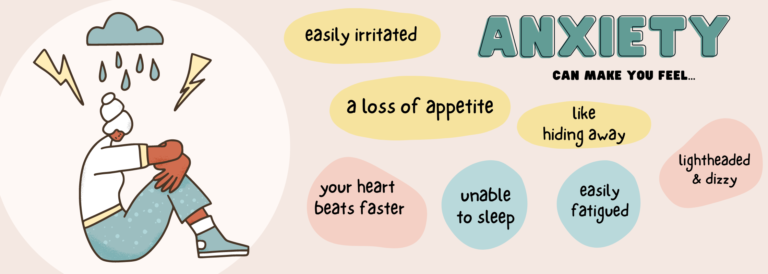
Agoraphobia:
The word Agoraphobia comes from a Greek word derived from the word Agora, meaning a place of assembly.
Agoraphobia is fear of situations where escape might be difficult or help not be available, for example being outside the house alone.
It may have started after being in a scary situation or after being left alone at home as a child.
It’s also linked to panic attacks, which are a set of emotional symptoms such as heart palpitations, sweatiness, and trembling that happen suddenly and out of the blue.
Post-traumatic stress disorder – PTSD:
Post-traumatic stress disorder (PTSD) is a mental health condition that can develop after you have been through a traumatic event. PTSD can affect people who have been through;
- Disaster
- Serious accident
- Attack
A traumatic event is an experience that is frightening, violent, or life-threatening. You may feel intense fear, helplessness or horror. These feelings can lead to upsetting memories, thoughts or dreams about the event.
If you experience these symptoms for longer than a month, you could have post-traumatic stress disorder.
Post-traumatic stress disorder can occur after exposure to a traumatic event that involved actual or threatened death or serious injury, or threats to the physical integrity of self or others (including experiencing sexual violence).
‘Post’ means after the event has happened and ‘traumatic’ implies that something was seriously distressing, shocking, scary or dangerous.
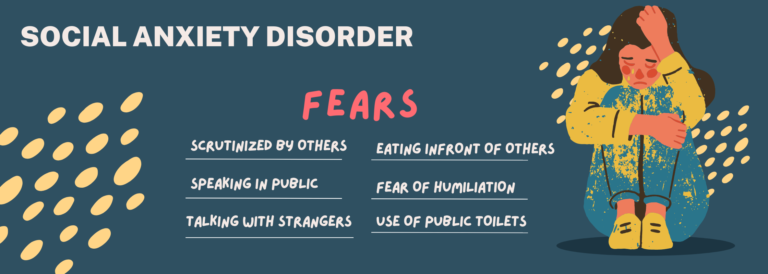
Social Anxiety Disorder – SAD:
Social Anxiety Disorder patients suffer from significant and persistent intrusive thinking about social situations. These thought patterns cause severe anxiety and can lead to panic attacks or avoidance behaviours, typically experienced as avoidance or restriction of certain social conditions.
Social Anxiety Disorder patients do not fear everyone or anything specific; they are only concerned with being near people they feel they cannot trust with their safety.
Generally, these bite off more than they can chew—their efforts to avoid the feared situation usually lead them further away from spending time with friends, family and loved ones.
Comfort Social Anxiety Disorder patients rarely suffer just in one social situation; their fears can extend across various activities and locations.
Fears experienced & Fear Situations:
- Scrutinized by others
- Negatively evaluated (i.e., humiliated, embarrassed, or rejected)
- eating or writing in front of others
- Interacting with authority figures
- Speaking in public
- Talking with strangers
- Use of public toilets
Symptoms of Anxiety experienced in SAD:
- Blushing
- “Butterflies in the stomach.”
- Diarrhea
- Stumbling over words
- Sweating
- Tachycardia
- Trembling

Specific Phobia:
Specific phobia is an anxiety disorder that may cause the affected person to have excessive, persistent and unrealistic fear about particular objects or situations. The fear is recognized as excessive by the person who would ordinarily be unable to discuss the fear.
Specific phobia is marked and persistent fear of a circumscribed object or situation. People may be afraid of;
- Animals
- Insects (e.g., spiders, bees and snakes)
- Natural phenomena (e.g., thunderstorms)
The extent of fear may vary from mild apprehension and discomfort to an intense desire to escape the provoking object or situation to the extent that a person’s normal physical health is affected.
In a specific phobia, unlike general anxiety disorder, the fear is restricted to a particular situation or object, such as animals, insects or heights. When the situation or thing is removed, the person starts to calm down.
Some Examples of Phobias:
- Fear of Spiders – Arachnophobia
- Fear Of Flying in an Airplane – Aviophobia
- Fear of Elevators – Elevatophobia
- Fear of Heights – Acrophobia
Most people with specific phobias recognize that their fears are unreasonable or exaggerated.
The avoidance of the feared object or situation interferes with day-to-day functioning, and often people will go to great lengths in order to avoid it. In more severe cases, the person may be unwilling to leave their house for fear of running into their phobia.
Facing the feared object or situation often triggers a panic attack, and patients struggle to regain control over their anxiety through various coping techniques. Specific phobias are rarely found in children under the age of 12.
How to Get better?
Treatment for generalized anxiety disorder (GAD), panic disorder, and social anxiety disorder (SAD) are often challenging if symptoms are longstanding and severe.
However, most patients will improve with initial treatment; as many as 3 in 4 patients do not remit with initial treatment.
The long-term goal of treatment for patients with GAD, panic disorder, or SAD is remission of core anxiety symptoms, such as worry, fear, and avoidance of social situations without any impairment in functionality, minimal anxiety, and no depressive symptoms.
Many people find it hard to deal with anxiety symptoms, especially if they try to cope alone. Seek help as soon as you can – the sooner you get help and treatment, the easier it will be to live a whole and rewarding life.
References:
Chand SP, Marwaha R. Anxiety. [Updated 2022 Feb 7]. In: StatPearls [Internet]. Treasure Island (FL): StatPearls Publishing; 2022 Jan-. Available from: https://www.ncbi.nlm.nih.gov/books/NBK470361/
way.

